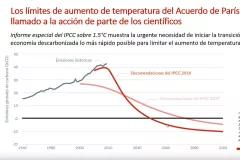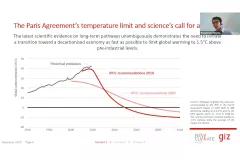This guidance provides recommendations to policy makers on how to approach the development of a long-term low greenhouse gas emission development strategy (LTS) given the unique circumstances of individual countries in 2020, and future revisions thereof.
Summary for Policy Makers:
Context
Under the Paris Agreement, 198 Parties to the UNFCCC have collectively committed to hold global average temperature increase to well below 2°C above pre-industrial levels and to pursue efforts to limit the temperature increase to 1.5°C. The latest scientific evidence unambiguously shows the need to initiate country-level transitions toward decarbonised economies as fast as possible to reach a net-zero greenhouse gas (GHG) emissions in the second half of the century globally to limit the global temperature increase accordingly.
In this context, Article §4 of the Paris Agreement calls on Parties to formulate and communicate a long-term low greenhouse gas emission development strategy (LTS) and submit these to the UNFCCC by 2020. This requirement is on top of the regular five-year update cycle of medium-term targets known as Nationally Determined Contributions (NDCs).
The guide’s recommendations build upon three key concepts for consideration by policy makers:
Concept 1
The LTS should be an ongoing exercise in creating a vision for the future of a low emissions economy informed by the latest science and integrated into a continuous planning process expanding beyond 2020. This long-term vision should be harmonised with future NDC revision cycles to ensure consistency and help drive action in the short term.

Concept 2
To account for country-specific circumstances and starting points, the development of an LTS can be guided by three levels of comprehensiveness ranging from a base level to a detailed level. By making the LTS development an ongoing visioning exercise as part of a continuous planning process, policy makers can enhance the LTS’s scope, depth and robustness over time in subsequent revision rounds.
Three levels of comprehensiveness for LTS development 
Concept 3
Building upon the concept of differentiated level of comprehensiveness emerging over time, the guidance identified eight key aspects of LTSs for consideration by policy makers and gives recommendations on how policy makers can address each aspect considering their country’s situation.









